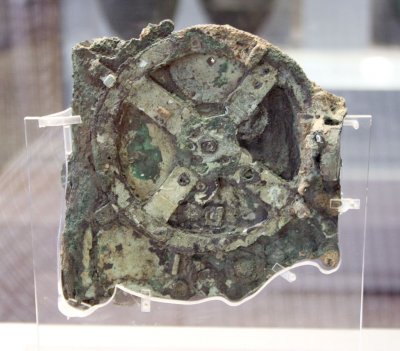Underwater archeologists have discovered a human skeleton in the celebrated Antikythera shipwreck.
The remains are well-preserved enough researchers may possibly extract DNA, which could shed light on the lives of the people who were aboard the large ship when it sank nearly 2,100 years ago.
The Antikythera shipwreck is a 40-meter-long Roman merchant vessel that sank sometime in the first century BCE, around the reign of Julius Caesar. Archeologists think it was destroyed after a brutal collision with the cliffs of the Greek island of Antikythera after which it is named.
“We think it was such a violent wrecking event,” said underwater archaeologist Brendan Foley, co-director of the Antikythera excavation team, in Nature. “People got trapped below decks.”
After the ship’s debris field was found in 1900 at a depth of 180 feet, the wreck quickly gained fame for its bounty of luxury goods, likely intended for wealthy Roman buyers.
Though numerous artifacts have been removed from the site since its discovery, the most sensational find was the seemingly anachronistic clockwork mechanism, considered the most technologically advanced device to have survived from classical antiquity. The ancient Greek timekeeper contains dozens of bronze gears designed to track the cycles of the Sun, Moon, select planets, solar eclipses, and even the Olympic Games.
Contemporary excavations into the seabed beneath the site have continued to yield new finds. On August 31, just weeks ago, researchers happened upon the watery grave of one of the shipwreck’s ill-fated victims.
The recovery of human remains from an ancient underwater wreck is exceptionally rare. Most bodies are consumed by ocean life or washed away by currents long before researchers have the opportunity to obtain them.
But because this person was buried under about a half-meter (1.6 feet) of broken pottery and sand deposits, much of the skeleton remained intact, including two arm bones, two femurs, several ribs, and a partial skull with teeth.
“We’re thrilled,” said Foley. “We don’t know of anything else like it.”
If the team is able to successfully extract DNA from the bones, it will mark the first time an ancient shipwreck casualty has been genetically sequenced. Though human remains were previously recovered from the Antikythera shipwreck in 1976—by Jacques Cousteau, no less—those samples were treated with chemicals for preservation or otherwise contaminated, making them poor candidates for DNA analysis. (Because DNA sequencing is a relatively new technology, earlier excavators often did not preserve samples in optimal condition for it.)
Based on the size of the femurs, the team speculates that the doomed passenger was likely male. At the time of this reporting, the researchers are waiting for the official greenlight from Greek authorities to attempt DNA extraction, because it was found in Greek waters. Genetic sequencing could result in a wealth of information, including confirmation of the sex, and insights into the subject’s ancestry and physical appearance.
“Who were those people who crossed the Mediterranean 2,000 years ago?” Hannes Schroeder, an ancient-DNA analyst from the Natural History Museum of Denmark, told Nature. “Maybe one of them was the astronomer who owned the mechanism.”
For now, the researchers have nicknamed the body “Pamphilos,” after a name etched into a wine glass recovered from the shipwreck. It seems fitting that even in Roman times, people felt the need to label their drinkware.
Christopher B. Taub













